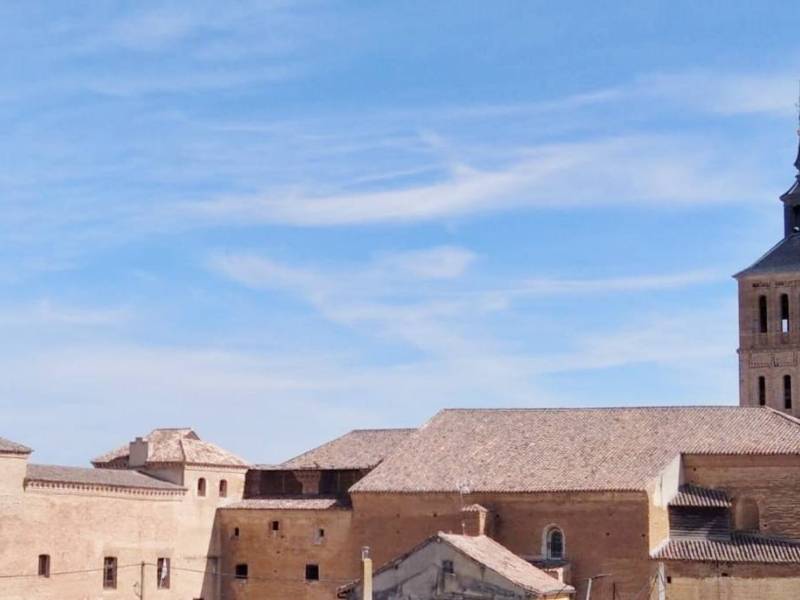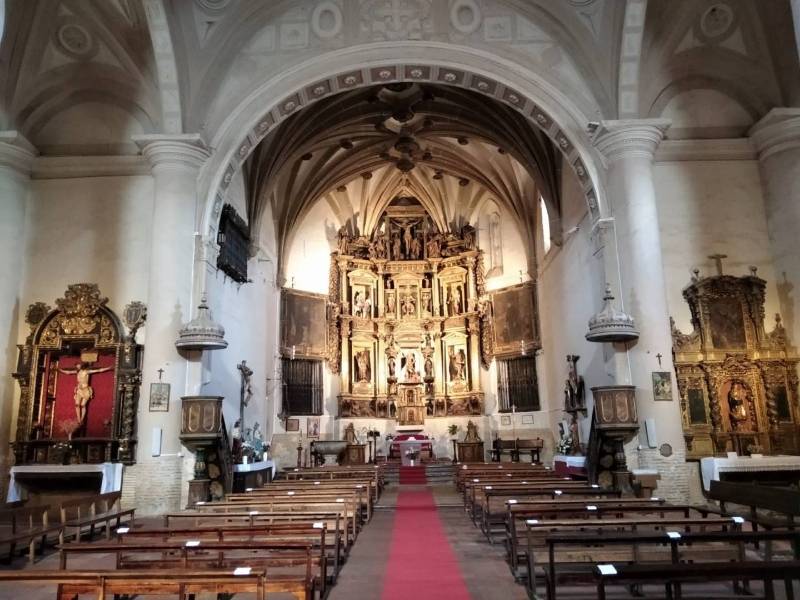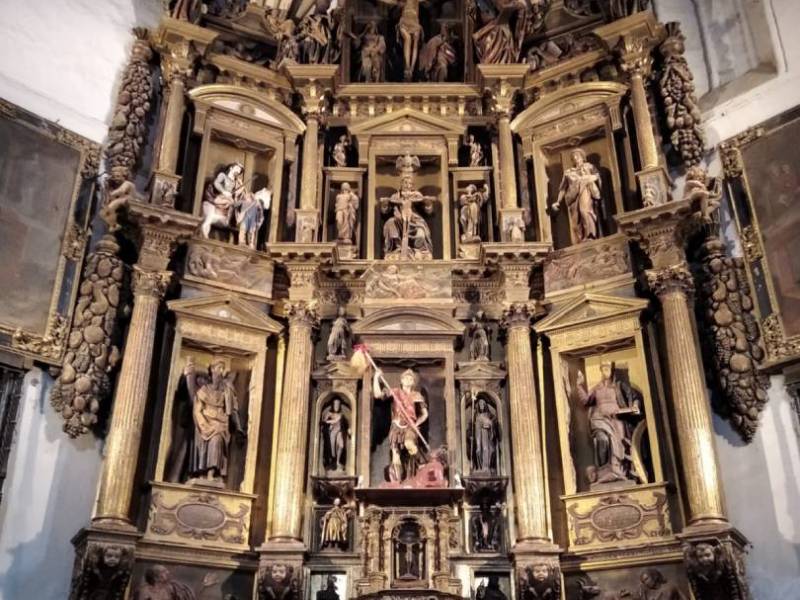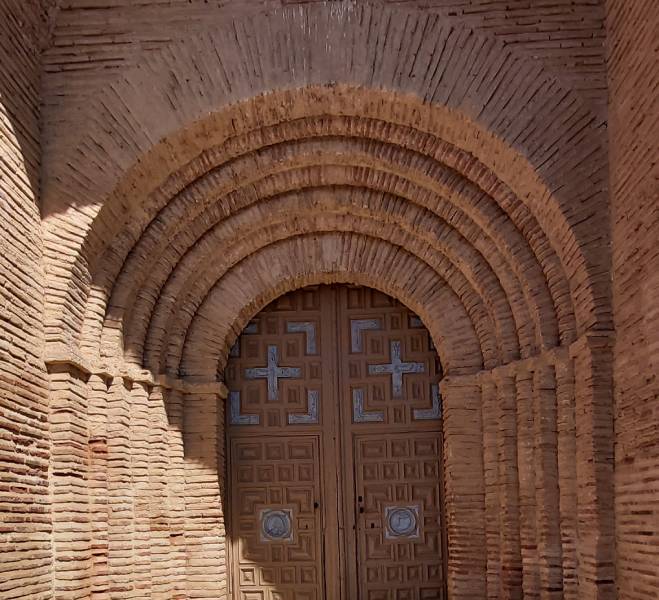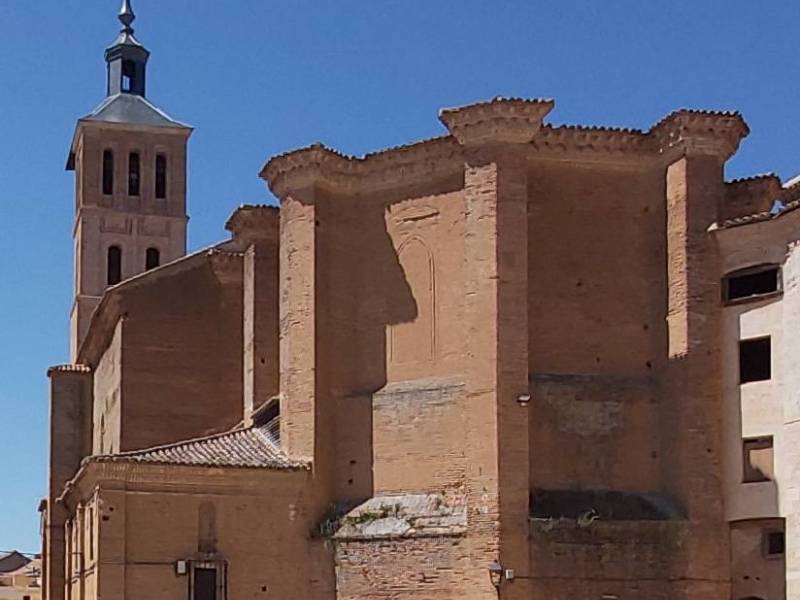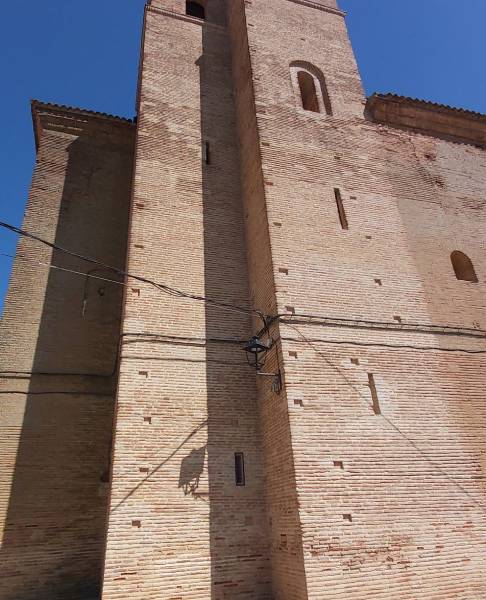Church of San Miguel Aracángel
The church of San Miguel Arcángel was rebuilt in 1516 on a previous church, possibly in the Romanesque or Mudejar style from the 12th century, in order to make it more spacious and encompass the six parishes that already existed in Grajal in the 13th century. It consists of three naves separated by large Tuscan columns, a hall plan, mixing elements of the late Gothic and Renaissance styles, with Baroque vaults. It is built in different stages. Thus, the flared of the portal is the oldest part of the church, Romanesque, and can date back to the s. XII. And the tower, at the foot of the church, is of the Moorish type, made of brick like the whole church, and 40 meters high. It has the peculiarity of having an angled corner. The main chapel is from the s. XVI, late Gothic style, heavily influenced by the Renaissance seal. The transept, the central nave and the lateral ones are made up of baroque vaults with different geometric drawings on plaster, all of this being covered from the 17th century.
Historical Data
- Architecture
- Religious architecture
- Construction
- Church
- Predominant styles
- Gothic
- Renaissance
- Historical Period
- Early modern period
When to visit it?
Opening hours
- Summer (July 30 – September 24):
- Tuesday, Wednesday, Thursday, Friday, Saturdays, Sundays and Public holidays: 10:00 AM - 2:00 PM and 5:00 PM - 8:00 PM (Closed: May 8th). Guided tours: 11:00 and 17:00
- Closed: Monday
- winter (October 13 – June 14):
- From Wednesday to Sunday: 10:00 AM - 2:00 PM and 4:00 PM - 7:00 PM. Guided tours: 10:00 and 16:00 h
- Closed: Monday and Tuesday
- From June 15 to July 29:
- From Wednesday to Sunday: 10:00 AM - 2:00 PM and 5:00 PM - 8:00 PM. Guided tours: 11:00 AM AND 5:00 PM
- Closed: Monday and Tuesday
- From September 30 to October 12:
- From Wednesday to Sunday: 10:00 AM - 2:00 PM and 5:00 PM - 8:00 PM. Guided tours: 11:00 AM AND 5:00 PM
- Closed: Monday and Tuesday
- From May 8 to May 11:
- Closed: Monday, Tuesday, Wednesday, Thursday, Friday, Saturdays, Sundays and Public holidays
Taxes
- General 7 €
- Reduced 5 €
Observations: Free admission on Wednesdays without guided tour. Free admission hours: 12:00 to 12:30 and 17:00 to 17:30. Closed from 8 to 16 April.
This portal is not responsible for possible changes in the schedules and rates reflected
Get to know the surroundings
Address and map location
- Postal address Grajal de Campos. León
- Phones628 510 242
Tourist information
Grajal de Campos town hall
To know moreAddress
- Postal address municipality of Grajal de Campos . León
- Web
- Phones987 784 506
Grajal de Campos tourism office
Address
- Postal address Palacio de los Condes de Grajal - Plaza el Conde s/n. Grajal de Campos. NaN. León
- Web
- Phones628 510 242
To know moreLeón tourism office
Address
- Postal address Pza. de Regla, 2. León. NaN. León
- Web
- Phones987 237 082
- Fax987 273 391
To know more

